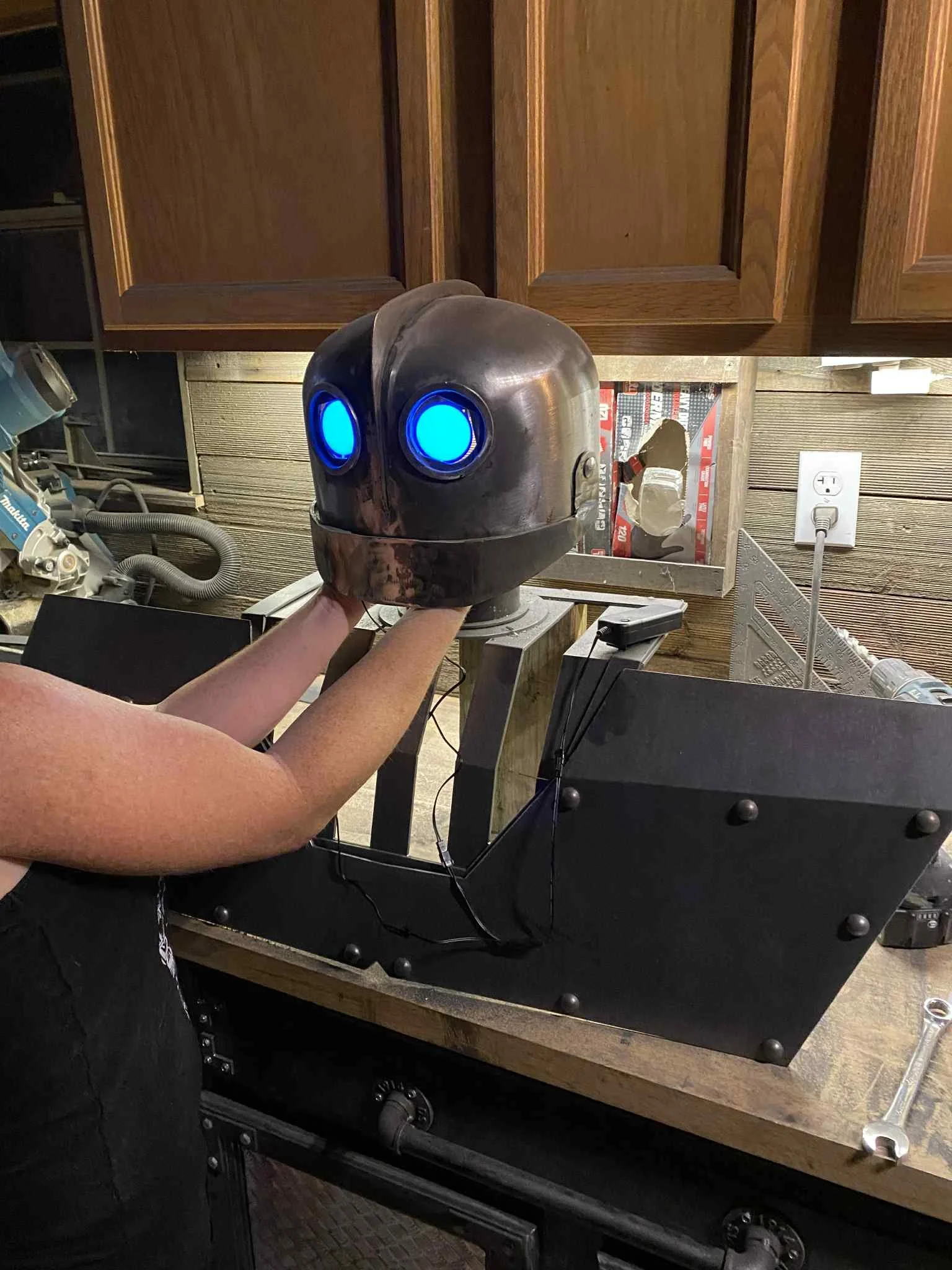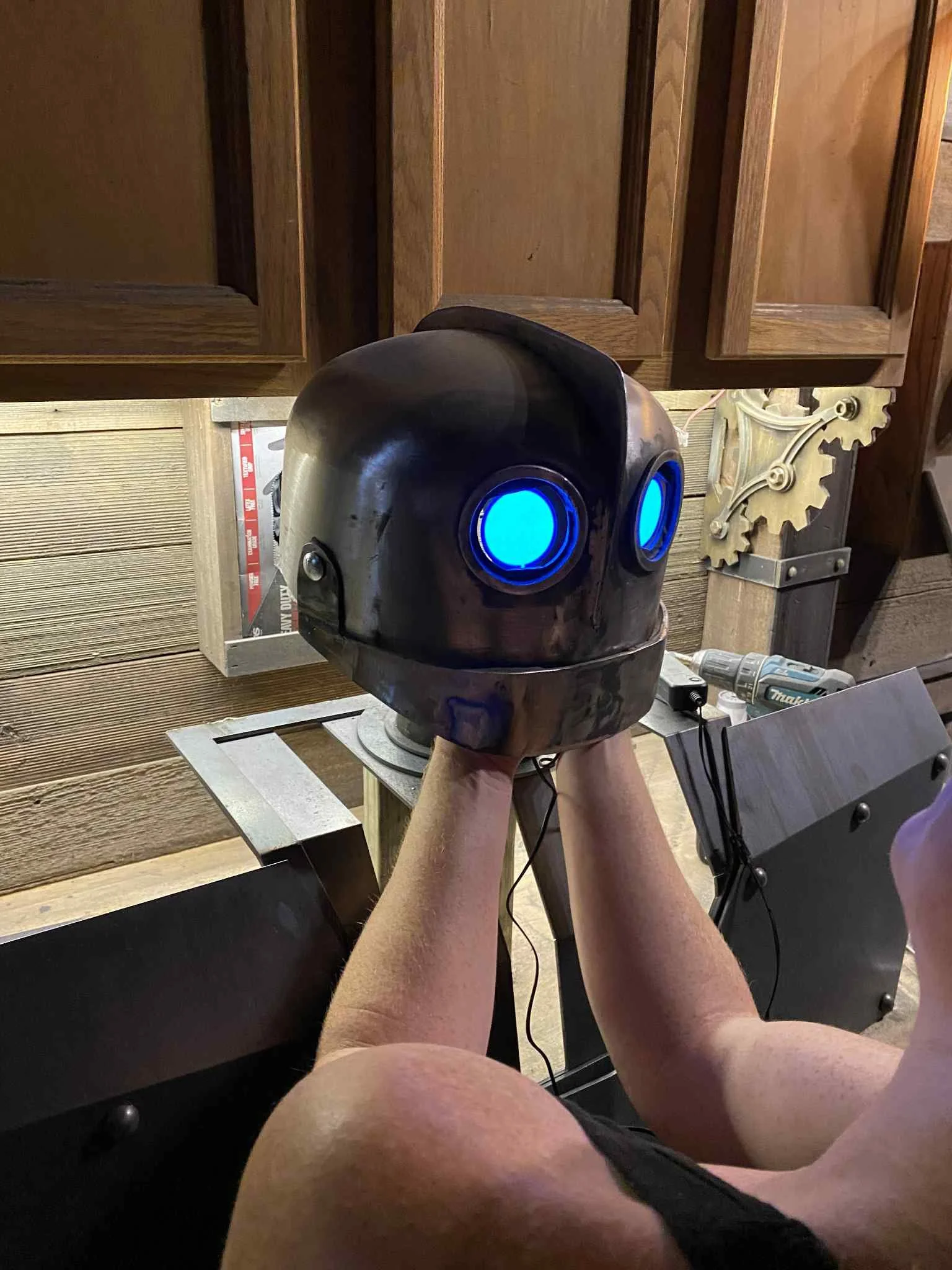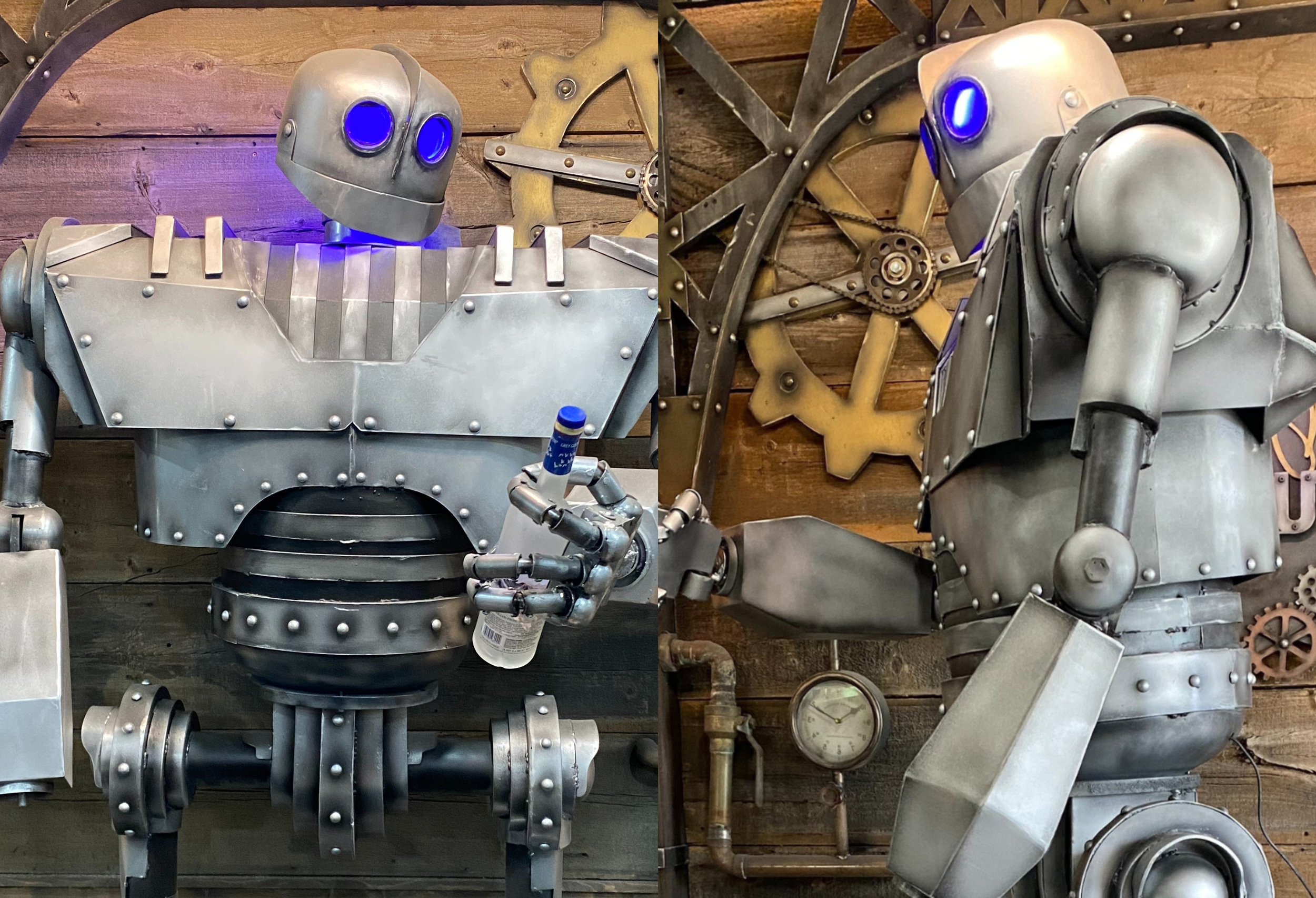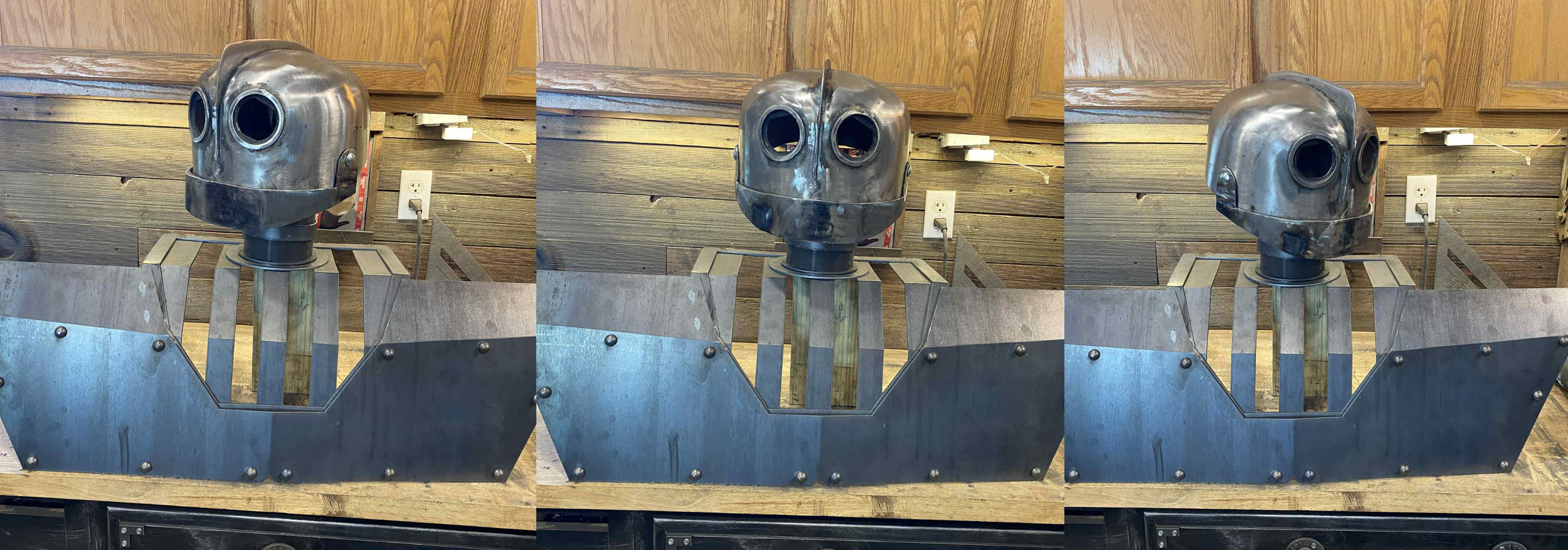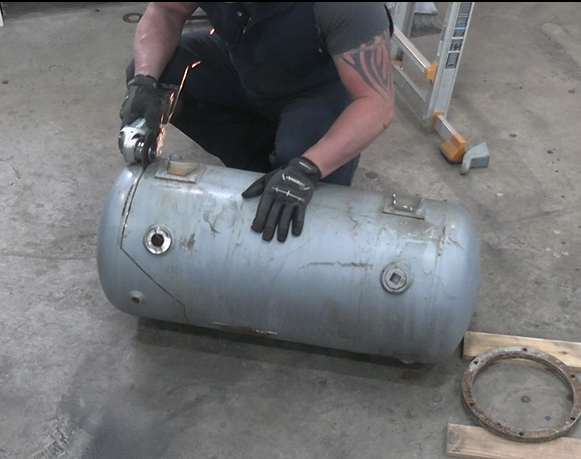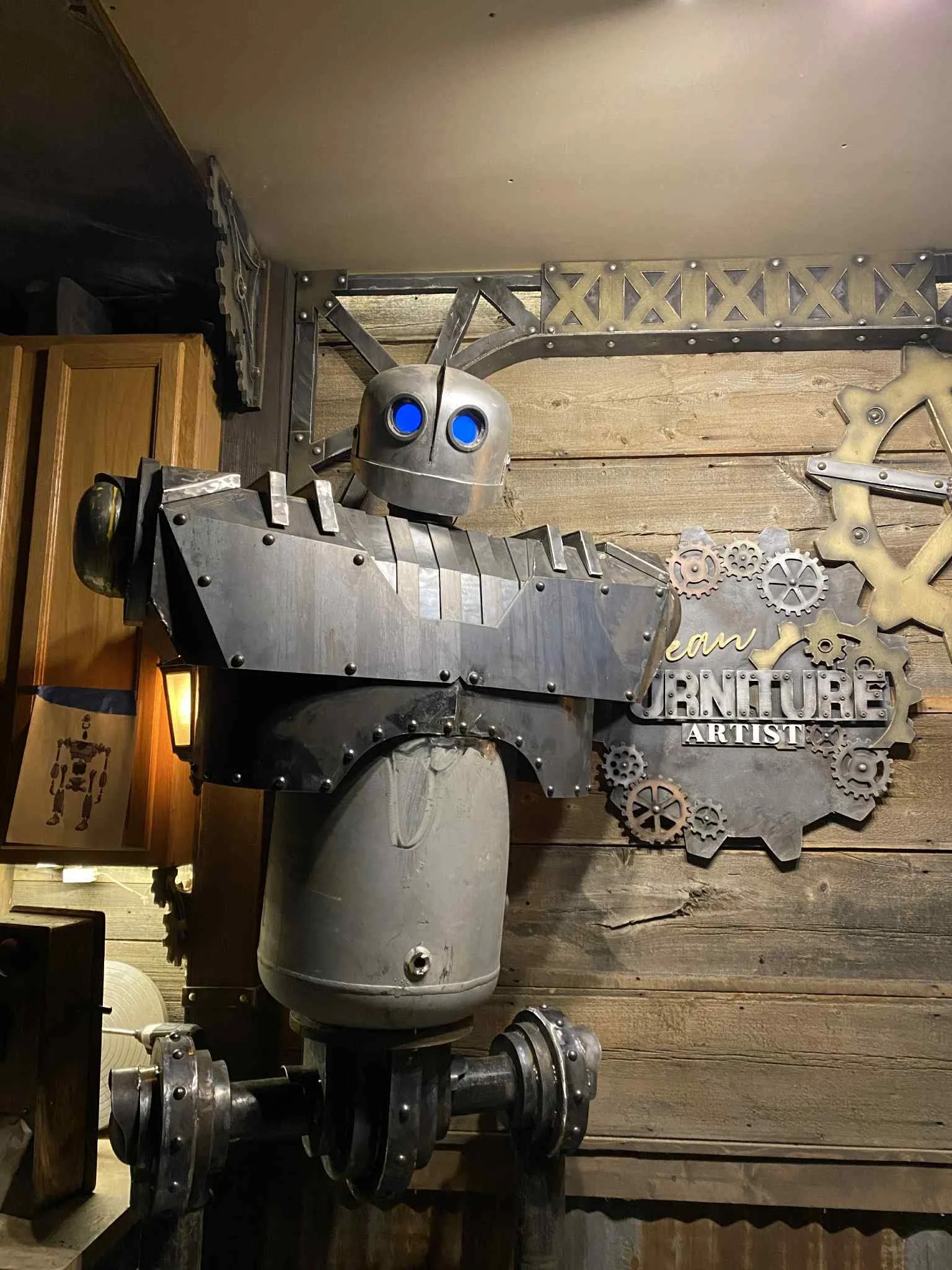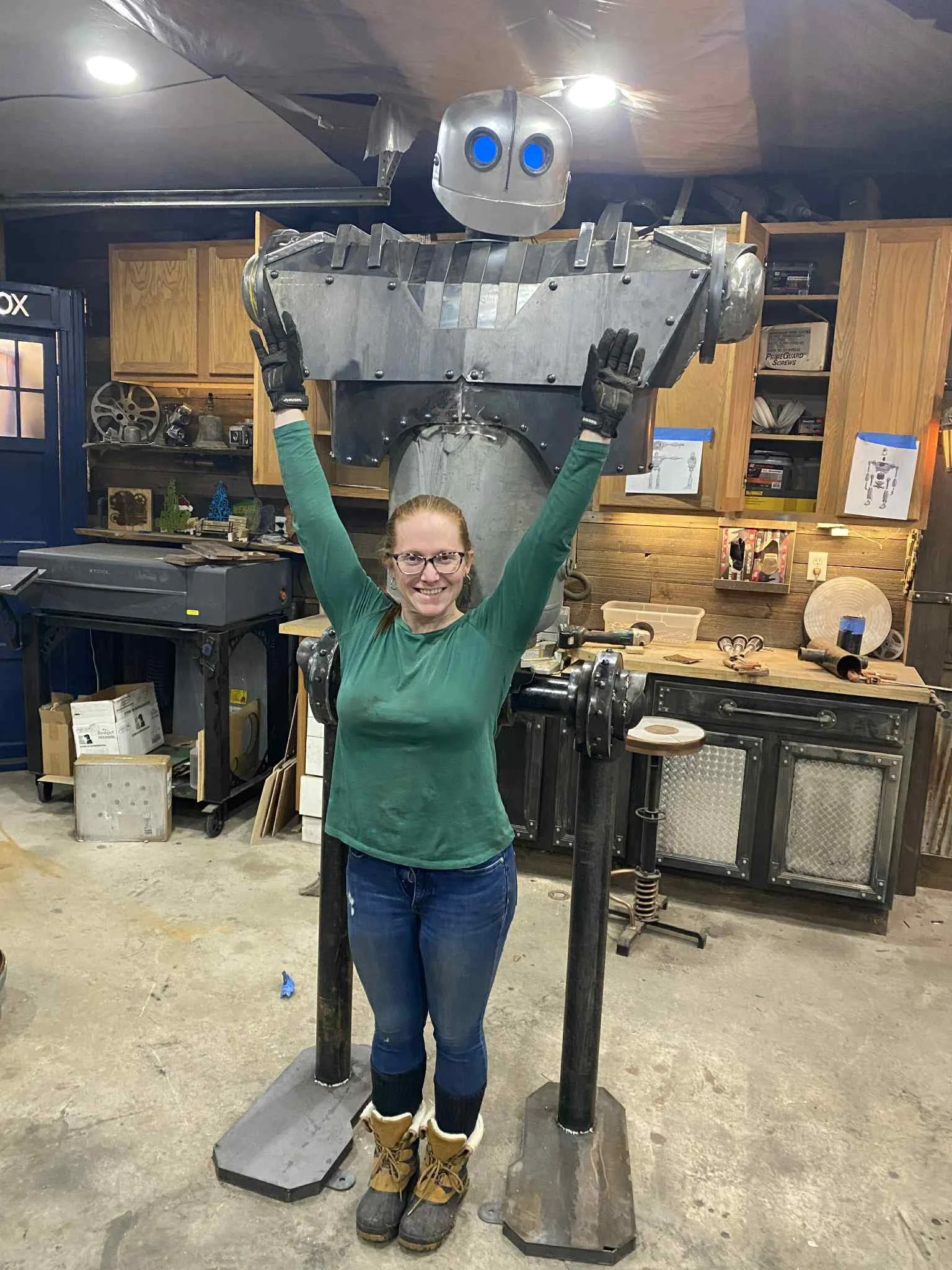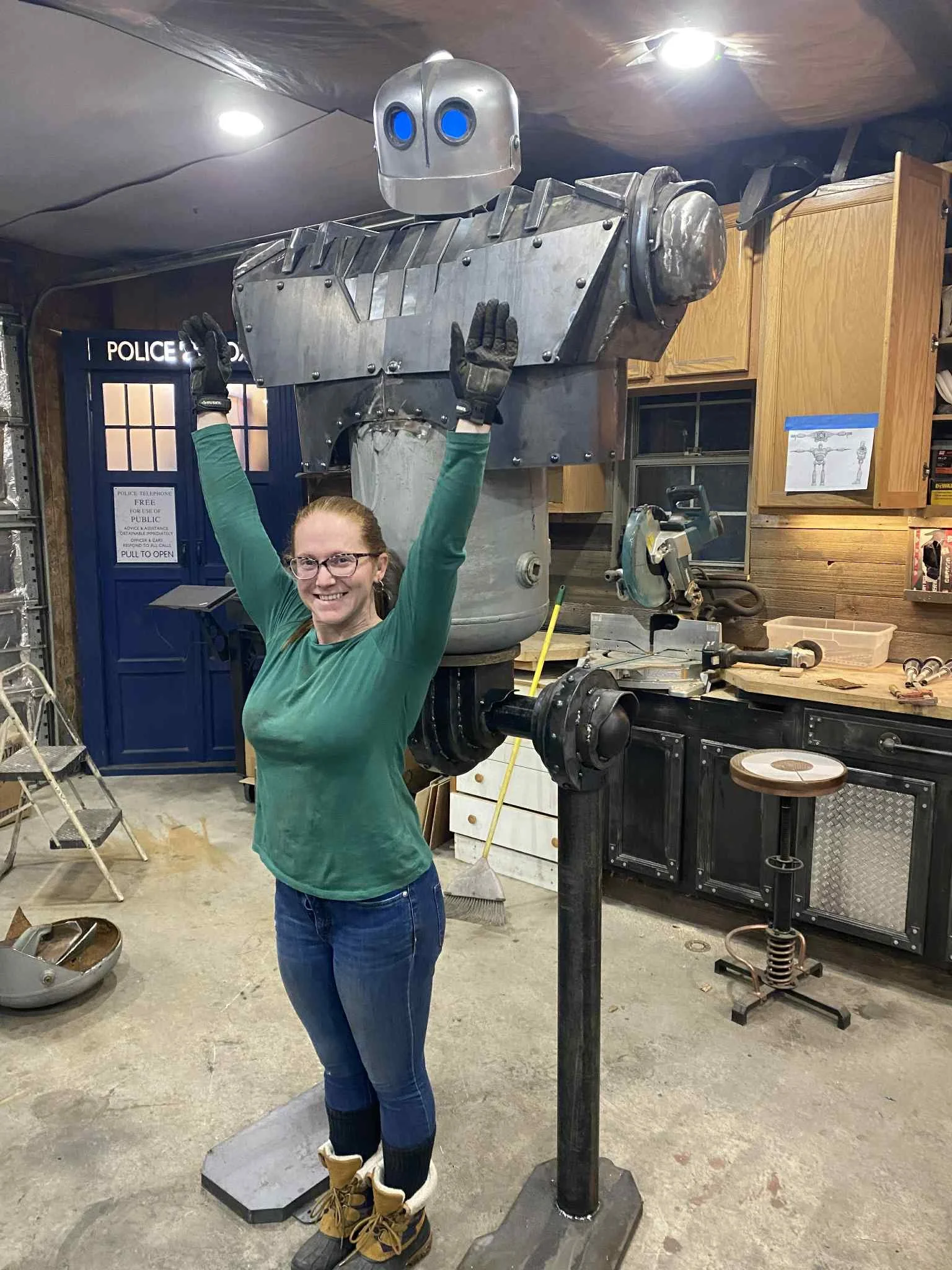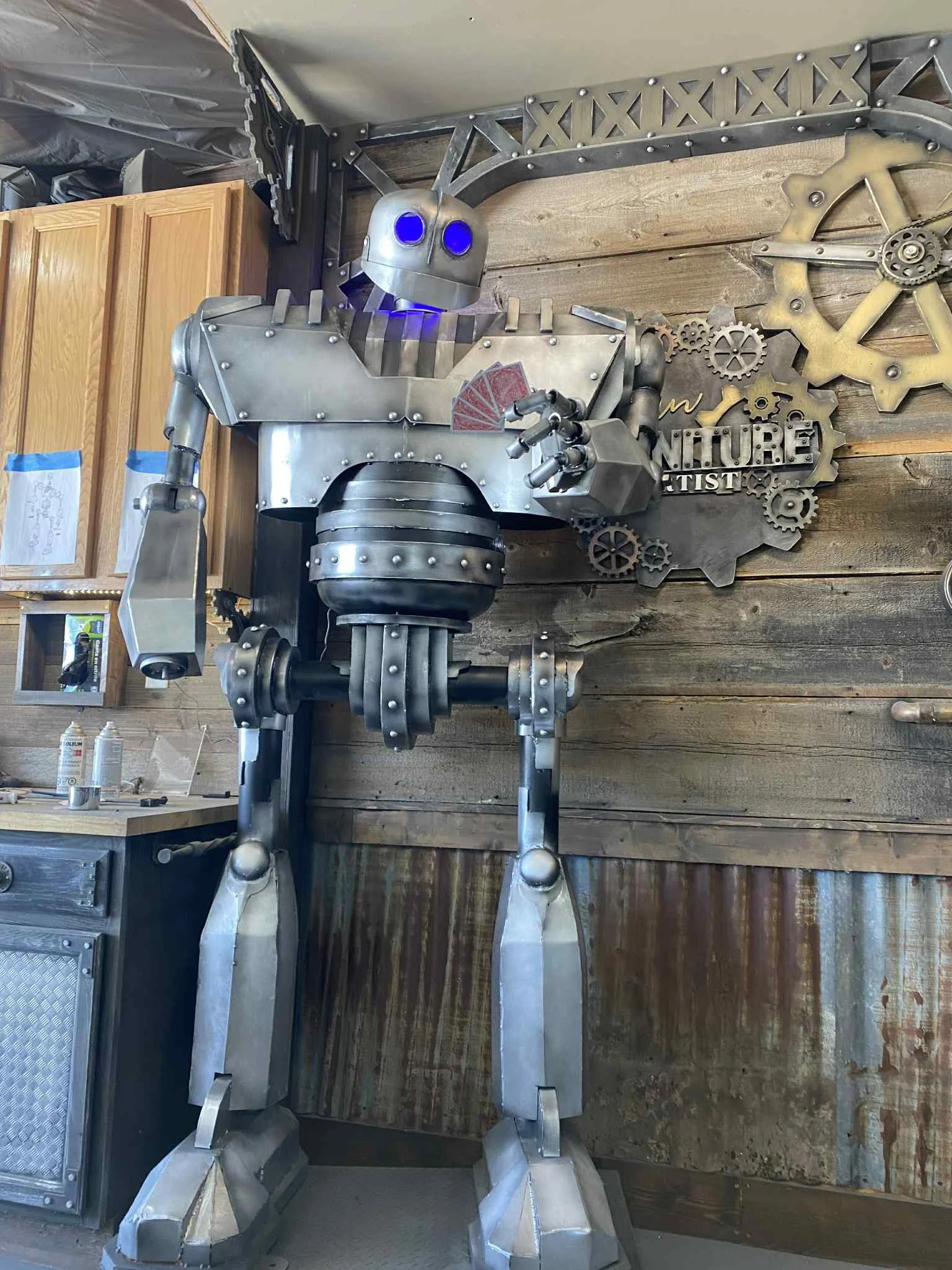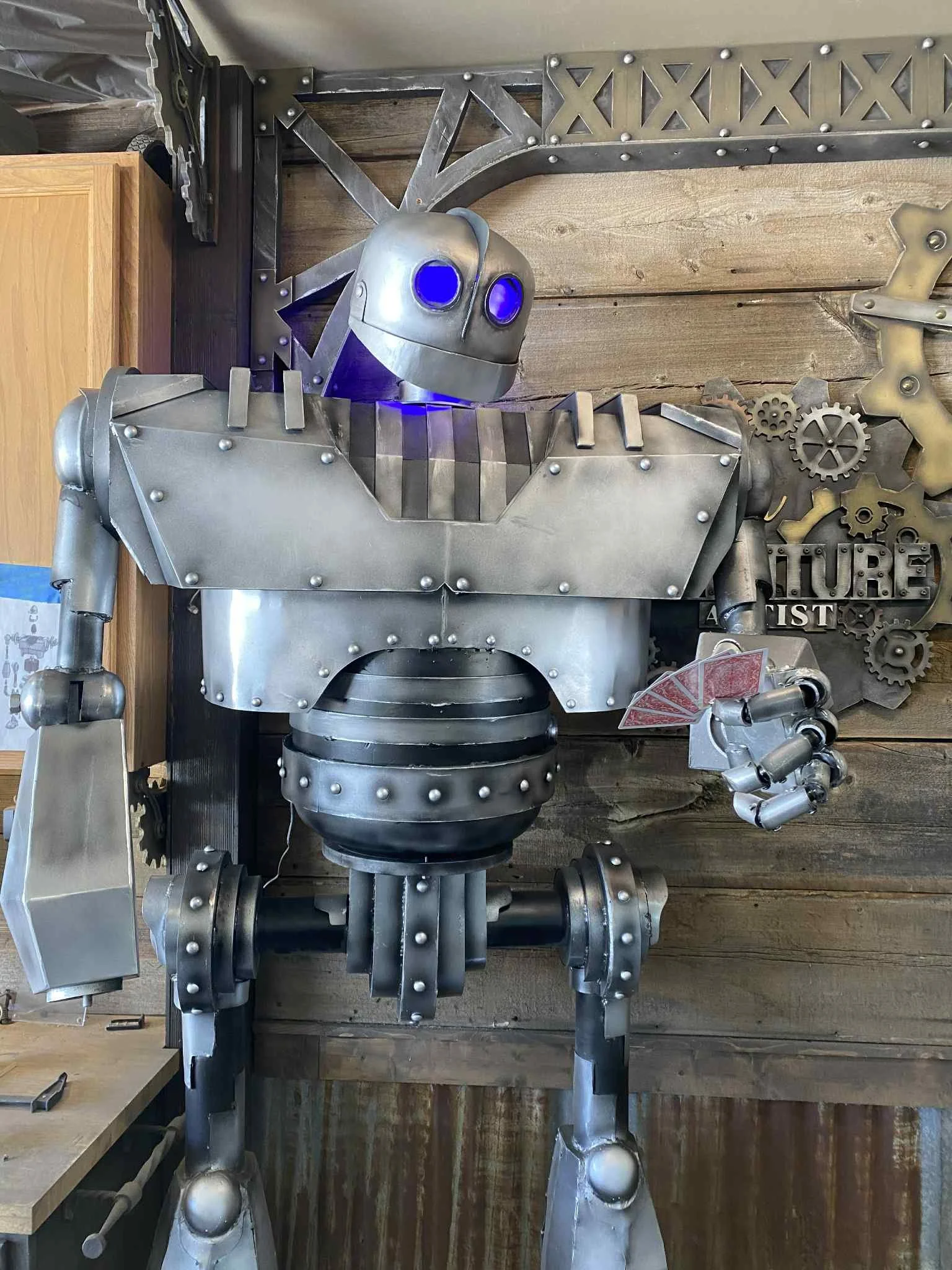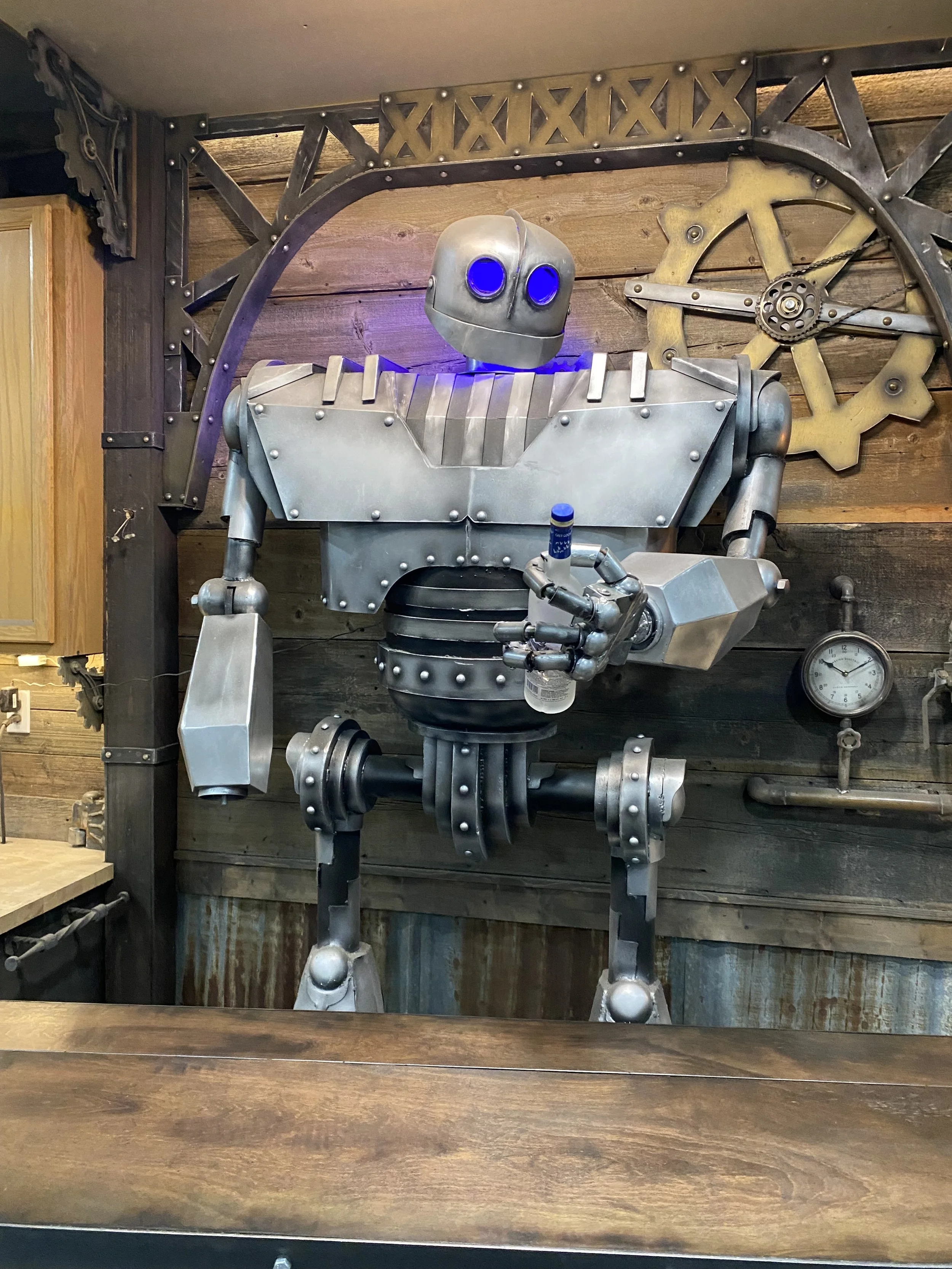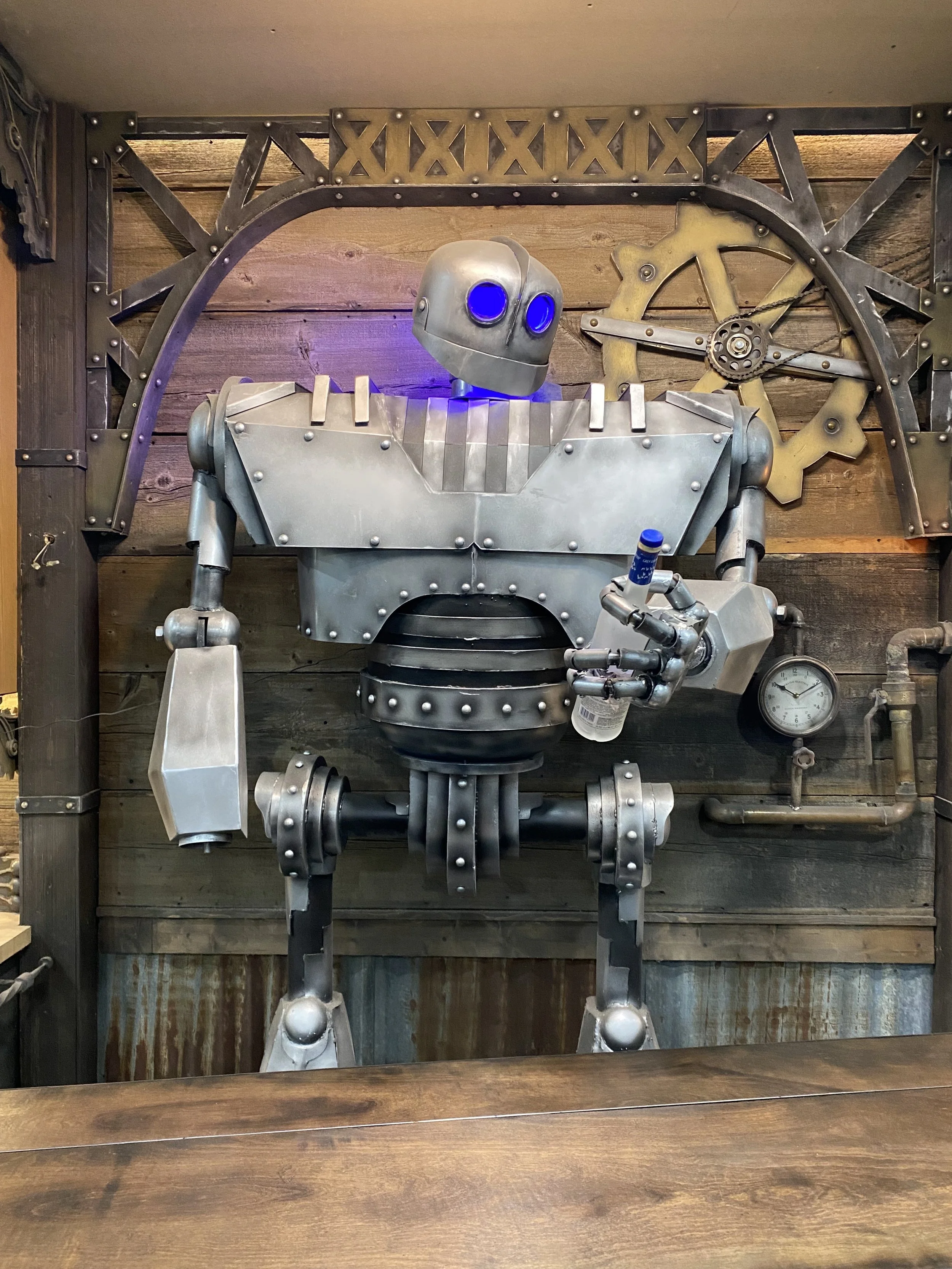
Inside the Workshop:
Stories, Builds & Behind-the-Scenes of
Dean Furniture Artist
Welcome to the official Dean Furniture Artist blog
where sparks fly, gears turn, and raw materials are transformed into one-of-a-kind steampunk and industrial furniture.
Whether you're a collector, fellow maker, or someone who just appreciates bold, handcrafted design, this is the space where I’ll share what goes on behind the scenes: the build process, tool tips, wild ideas, and the stories behind each custom piece..
A behind-the-scenes look at how I built this custom 8-foot Iron Giant sculpture
A behind-the-scenes look at how I built this custom 8-foot Iron Giant sculpture—crafted from recycled air tanks and steel, inspired by my love for the animated classic.
—crafted from recycled air tanks and steel, inspired by my love for the animated classic.
Dean Furniture Artist standing beside his handcrafted 8-foot Iron Giant sculpture made from recycled steel and air tanks, featuring glowing blue eyes and articulated joints.
A Tribute to a Classic
Ever since The Iron Giant hit theaters while I was in high school, I’ve carried a deep love for that movie. Maybe it’s the giant robot, maybe it’s the retro 1950s styling, or maybe it’s the emotional weight that still hits hard even now in my 40s—but it’s always stayed close to my heart.
I’ve always had a thing for movies with massive machines. From Transformers to an old-school cult classic called Robot Jox, and more recently Pacific Rim—the first one, not the second one 😆—I’ve just always been drawn to the creative possibilities behind big, mechanical characters.
The Iron Giant is a 1999 American animated science fiction film directed by Brad Bird and produced by Warner Bros. Feature Animation. It is loosely based on the 1968 novel The Iron Man by Ted Hughes (which was published in the United States as The Iron Giant), and was written by Tim McCanlies from a story treatment by Bird. The film stars the voices of Jennifer Aniston, Harry Connick Jr., Vin Diesel, James Gammon, Cloris Leachman, John Mahoney, Eli Marienthal, Christopher McDonald, and M. Emmet Walsh. Set during the Cold War in 1957, the film centers on a young boy named Hogarth Hughes, who discovers and befriends a giant alien robot. With the help of a beatnik artist named Dean McCoppin, Hogarth attempts to prevent the U.S. military and Kent Mansley, a paranoid federal agent, from finding and destroying the Giant.
Why I Built This
Even though I spend most of my time designing and building custom industrial and steampunk furniture, sometimes you need to step away from routine. For me, creative resets come in the form of spontaneous, off-the-cuff builds. No plan, no measuring everything twice—just letting the spark take over.
I’d always wanted a life-size Iron Giant in my shop, but I wasn’t sure I had the skills to pull it off in a way that did the character justice. If you’ve ever tried to replicate something from an animated movie, you’ll know the proportions can be a nightmare. They change from scene to scene—hands double in size, heads shift, angles warp.
But this was one of those passion projects I had to do.
Starting with the Head
I knew the head would set the tone, so I started there. Since I don’t have the equipment to roll perfect curves or form large domes, I was always on the lookout for something ready-made. That’s when my wife spotted a small blue air tank at Habitat for Humanity. She picked it up and said, “This would make a good starting point for your Iron Giant head.”
She was right.
The tank sat on a shelf for a while, but once I finally committed, it all started falling into place. I began shaping the rest of the body based on the proportions of the head. I wasn’t chasing perfection—I just wanted people to look at it and say, “That’s the Iron Giant,” not, “Why is his arm 3 inches shorter?”
The Hardest Part: The Face
Getting the expression right was the hardest part. A tiny change in curve or placement can totally shift the emotion. If I messed up the jaw or sloped the brow too much, he’d look angry or goofy. I wanted him to look kind, even a little curious—just like in the movie.
Originally, I planned to make the jaw move. I designed it to open and close, but after testing it, I realized there wasn’t a way to do it without awkward gaps or friction. So I locked it into a slightly open position that gives him a subtle, contented smile.
Same challenge with the eyes. I tried blue LED puck lights at first, but they felt off—too clean, too “store bought.” So I swapped in sanded plexiglass for a fogged look and added blue LED strip lighting around the eyes, hidden inside the head. The light now glows inward toward the center, creating a softer, more lifelike feel.
Funny thing—depending on the angle, he actually looks like he's smiling or ready to throw down. Straight on? He’s got that calm, friendly Iron Giant vibe. Turn the head 90 degrees? He looks like he’s about to defend a city. Complete accident. Totally works.
Side-by-side photos of a custom 8-foot Iron Giant sculpture by Dean Furniture Artist—facing forward with a curious, friendly expression, and turned to the side with a strong, battle-ready stance. Built from recycled steel with glowing blue eyes and articulated joints.
Making It Poseable
I wanted the head to be posable, so I made sure it could tilt up/down and rotate left/right. The solution was simple: I welded two flat steel tabs inside the head, bolted them to a vertical pivot bar, and added a washer base that allows for horizontal rotation. That pivot bar runs up into the mohawk, which acts like a hidden anchor point. Sometimes, the simplest methods work best.
Side-by-side photos showing the articulated head movement of the custom-built Iron Giant sculpture by Dean Furniture Artist, highlighting how the head tilts and rotates in different directions.
Building the Body, Arms, and (Eventually) Hands
Once the head was complete, the next challenge was scaling the chest and back to match its proportions. Honestly, it turned out to be easier than I expected… until I got to the waist.
See, the Iron Giant’s waist in the animated film is very round and exaggerated—visually it works in 2D, but in the real world, if I kept it that large, it would’ve ended up wider than his chest and shoulders. So I had to improvise.
I ended up using a large old air tank a neighbor had sitting in their backyard. It was perfect in shape, but way thicker than I expected—cutting through it took some serious effort. I had to widen the chest and back just enough to wrap around that tank and keep the proportions believable.
Cutting into a recycled air tank to create the waist section for the Iron Giant sculpture build, showing Dean in the workshop using an angle grinder.
Front view of the Iron Giant sculpture with the recycled air tank waist installed, showing the head, chest, and leg sections assembled in Dean Furniture Artist’s workshop.
Fire Sprinkler Pipes for Limbs
For the arms and legs, I repurposed used fire suppression sprinkler piping that a friend had salvaged from a Lowe’s or Home Depot job. That gave the limbs an industrial, heavy-duty look—plus it was affordable and already had that aged patina I love working with.
I debated making the shoulders fully poseable, but to keep it simple, I designed the elbows to be the pivot point. Each arm can swing up past 90 degrees or extend fully straight. That was made possible by using a domed pipe cap on either side of a round pipe section, running a bolt through as a tension-based hinge. Just loosen it to reposition the arm, then tighten it back down—done.
Engineering the Legs, Feet & Lower Stability
Once the upper body was done, my biggest concern was balance. If you look at the Iron Giant, he’s got a massive upper body and long, skinny legs—which looks great in animation, but in the real world? That’s a top-heavy tipping hazard waiting to happen.
To keep him stable, I overbuilt the feet a little. Not cartoonishly big, but just enough to give him a solid base. I also “cheated” the leg position slightly forward on the foot platform, shifting the center of gravity for better balance.
When I built the feet, I even added hidden mounting points so the whole sculpture could be bolted to the floor if needed. I figured if someone bumped into him or leaned on him, he’d be on the ground in seconds.
But to my surprise? He’s rock solid. Once we stood him up fully assembled, he stayed balanced. I even gave him a few test shoves and couldn’t get him to tip. No floor bolts needed. Probably a one-in-a-million fluke, but I’ll take it.
The legs are made from the same fire sprinkler pipe, just in a slightly larger size. I built them straight down from the waist to the feet first—it looked a bit goofy at that stage, like two pipes stuck into clown shoes—but I knew I’d be “skinning” it with more detail later.
Once the core frame was solid and everything was welded up tight, I added on the calves, kneecaps, foot plating, and hip joints to give the whole lower half more character and bring it in line with the upper body’s look.
And here’s something I’m really glad I planned for early on: I built it so the entire upper body could separate from the legs with just a couple of bolts through the waist. Originally, I didn’t have any intention of selling this—it was just something for me and my wife to enjoy in the shop—but I still wanted to be able to move it if needed.
So when the time came to lift it, we could take off the arms, separate the torso from the legs, and move it in manageable chunks. Not only did that make assembly easier, but it turned out to be a smart move when we realized people actually wanted to buy this thing.
The Hands: An Unexpected Obsession
The hands turned out to be way more complicated than I planned. First, building them to scale was tough enough—but trying to articulate each finger joint and have it hold position after moving? That took hours of testing and frustration.
If I ever build another one of these, I’m not sure I’ll make the hands as functional as I did on this one. You’ll notice in some photos, the robot is missing his right hand—that’s because it took so long to finish the left one, I left the right for last. In the end, I gave it a locked-in, sculpted pose to match the left hand’s look without going through all the articulation again.
That said, both wrists are fully functional—they can rotate 360 degrees, and the hands can curl up or down. That opened the door to all kinds of fun poses: holding poker cards, an oil can like the Tin Man, a broom, or even placing his hand gently on my shoulder like a giant buddy. That small detail brought him to life.
Dean Furniture Artist standing next to the partially completed Iron Giant sculpture, with the articulated left hand resting on his shoulder and the right hand still unfinished, showing detailed custom metalwork in progress.
Final Thoughts: Why This Build Mattered
This Iron Giant build wasn’t about perfection — it was about passion. What started as a pile of scrap metal and an old air tank became one of the most challenging, rewarding, and just plain fun projects I’ve ever tackled in the shop.
It reminded me why I love what I do: creating things that make people stop, smile, and feel something. Whether it’s a custom piece of steampunk furniture or an 8-foot-tall robot with a heart, it’s about bringing imagination into the real world — one weld, one bolt, one idea at a time.
I learned so much throughout this build — from tackling difficult proportions to engineering moving joints — and I can honestly say the next one will be even better. I would love to be commissioned to create another Iron Giant, whether for a private collection, business, themed space, or display. Every project pushes my creativity further, and I’m excited to see where the next one leads.
👉 Interested in commissioning your own Iron Giant or custom sculpture? Contact me here — let’s make something unforgettable together.
The custom-built 8-foot Iron Giant sculpture by Dean Furniture Artist displayed indoors next to tall windows, playfully holding a glowing lightsaber-style prop in front of a ping pong table.














